A couple of weeks ago I had to go to the Forest of Preuilly to collect fungi for the Fete de la Nature held on 4-5 November. Here are a few of the species I found.
Magpie Inkcap Coprinopsis picacea (Fr. Coprin pie) is a species that grows in groups in the grass along forest tracks. It is easy to identify because of the contrast between the dark cap colour and the white scales.
The Forest of Preuilly supplies high quality timber to the building trade, so there are always piles of felled trees at the side of the road. Sometimes they have interesting fungi growing on them.
An early stage False Turkey Tail Stereum hirsutum (Fr. Stérée hirsute).
Well developed False Turkey Tail.
The Split-gill mushroom Schizophyllum commune (Fr. Schizophylle commune) is probably a species complex. I'd never seen the species before and the first thing Didier said to me when I showed it to him to identify was that lots of people are allergic to it, and the spores can cause pulmonary disease.
Mature False Turkey Tail ready to spore and white with spores underneath. Once the spores have been released it will go orangey brown underneath.
Split-gilled mushroom is quite attractive to flies, ants and other insects. The flesh is tough and elastic, and in some cultures it is used as chewing gum.
The Split-gill mushroom is often the first fungus to colonise a newly dead (or felled) tree. Despite being possibly the most widely distributed fungus species in the world, it appears to be in regression, due to fungicides and the reduction in dead wood in modern forestry systems.
False Turkey Tail. The diagnostic 'hairs' on the upperside can be easily seen on this fresh young specimen. This is another global species that seems to be native to Europe, America and Australasia.



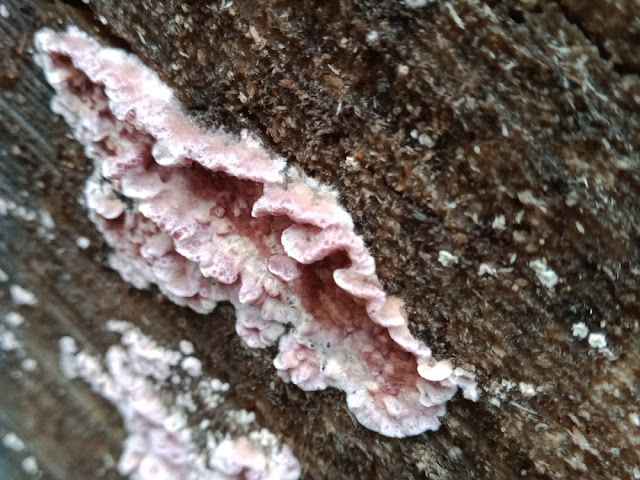
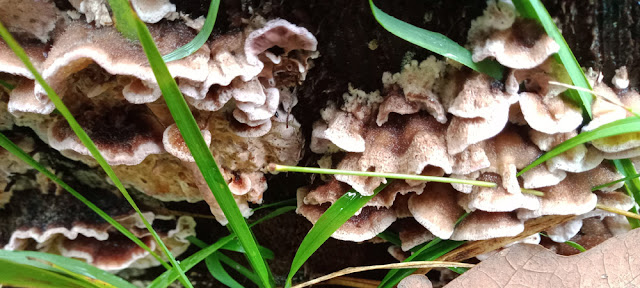
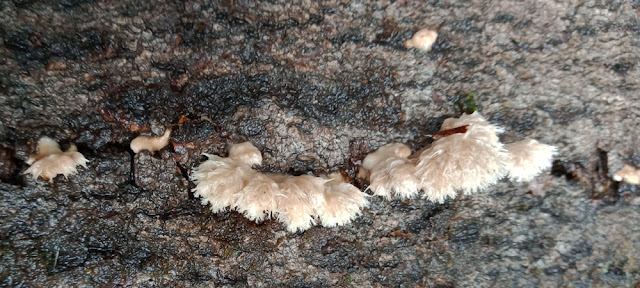

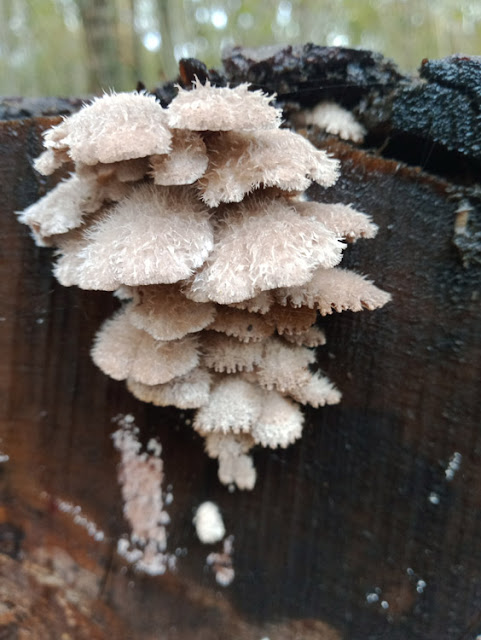
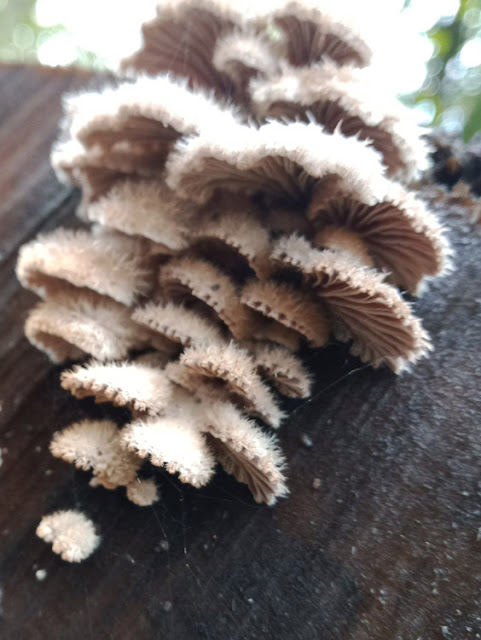
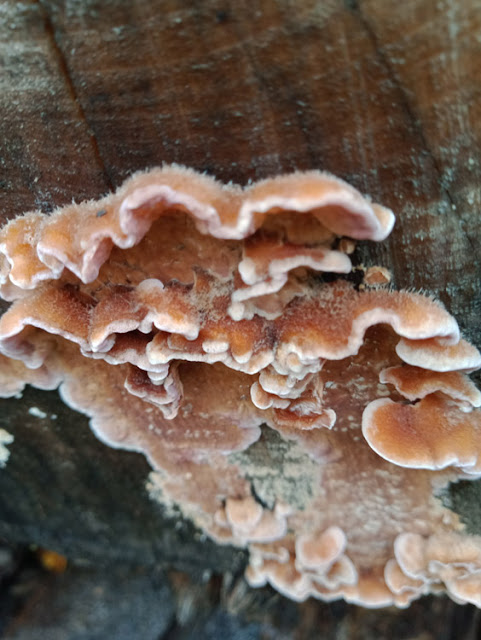
No comments:
Post a Comment